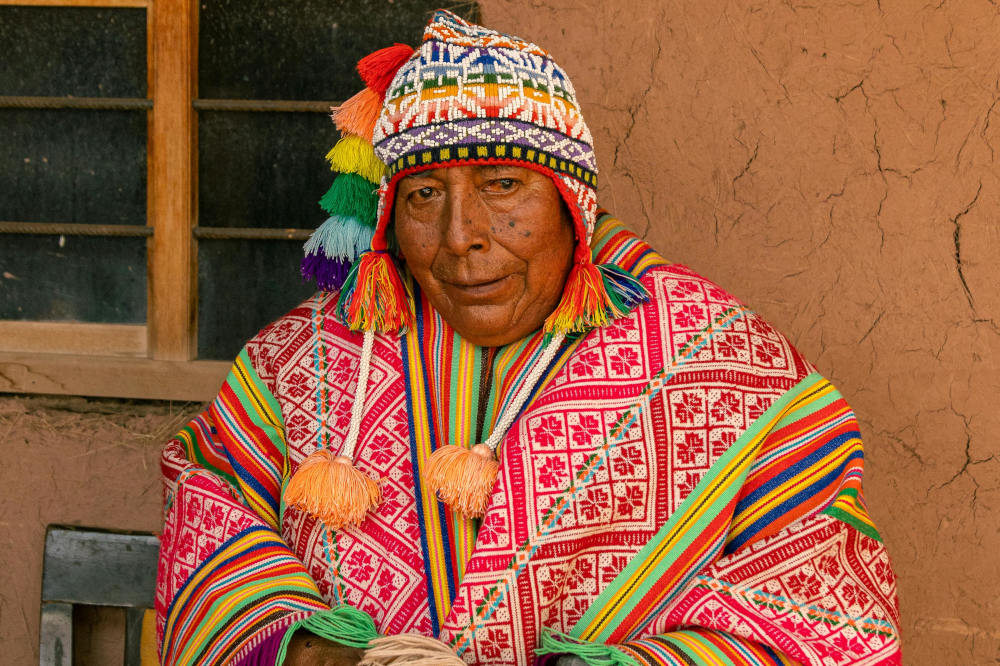
Les chamans amérindiens – également appelés guérisseurs, chefs spirituels ou saints hommes et femmes – ont longtemps joué un rôle central au sein de leurs communautés. Ils étaient non seulement guérisseurs, mais aussi gardiens du savoir sacré, guides spirituels et intermédiaires entre le monde physique et le monde spirituel. Bien que le terme « chaman » ne soit pas un terme amérindien traditionnel, il a été adopté dans des discussions plus larges sur les pratiques spirituelles autochtones. Les chamans amérindiens pratiquaient des traditions profondément ancrées, transmises de génération en génération, utilisant des cérémonies, des visions, des chants et des rituels pour maintenir l'harmonie entre les hommes, la nature et le monde spirituel.
Cet article met en lumière certains des chamans amérindiens les plus influents et les plus célèbres de l'histoire, explorant leurs histoires, leur signification culturelle et leur héritage durable.
Panaprium est indépendant et pris en charge par les lecteurs. Si vous achetez quelque chose via notre lien, nous pouvons gagner une commission. Si vous le pouvez, veuillez nous soutenir sur une base mensuelle. La mise en place prend moins d'une minute et vous aurez un impact important chaque mois. Merci!
Comprendre le rôle des chamans amérindiens
Dans de nombreuses cultures amérindiennes, le leadership spirituel n'était pas séparé de la vie quotidienne : il était intimement lié à la santé, à l'agriculture, à la résolution des conflits et aux traditions culturelles. Les guérisseurs étaient choisis non par ambition, mais grâce à des visions, des dons spirituels ou la reconnaissance des aînés.
Ils ont accompli un large éventail de tâches :
-
Guérir les maladies physiques et émotionnelles à l'aide d'herbes, de chants et de travail spirituel
-
Guider leurs communautés en temps de crise ou de transition
-
Communiquer avec les esprits ou les ancêtres à travers les rêves et les visions
-
Conduire des rituels de purification et des cérémonies saisonnières
-
Enseigner les traditions orales sacrées et la cosmologie de leur peuple
Parce qu’il existe des centaines de nations autochtones distinctes en Amérique du Nord, les pratiques, les noms et les titres des chamans varient considérablement, mais leur importance est universellement profonde.
1. Élan noir (1863-1950) – Oglala Lakota
Sans doute le chaman amérindien le plus célèbre de l'histoire, Black Elk était un Wičháša Wakȟáŋ , ou saint homme, vénéré des Oglala Lakota. Dès son plus jeune âge, il eut de puissantes visions. À neuf ans, il serait entré en transe pendant plusieurs jours, au cours de laquelle il aurait reçu des connaissances sacrées des Êtres du Tonnerre et d'autres esprits. Cette vision devint le fondement de sa vie spirituelle et de son accompagnement.
Black Elk a participé à des événements historiques majeurs, notamment la bataille de Little Bighorn en 1876 et le massacre de Wounded Knee en 1890. Au cours des années suivantes, il s'est converti au catholicisme, mais il a continué à pratiquer et à honorer la spiritualité Lakota, mélangeant les deux traditions.
Son histoire a été partagée avec le monde entier grâce au livre Black Elk Speaks (1932), rapporté par le poète John G. Neihardt. Bien que controversé pour sa rédaction, ce livre a conservé des informations précieuses sur la cosmologie, le symbolisme et les rites sacrés lakotas tels que la Danse du Soleil et la Quête de la Vision .
2. Rolling Thunder (1916–1997) – Cherokee/Shoshone
Rolling Thunder, né John Pope, était un chef spirituel, un guérisseur et un activiste amérindien moderne qui est devenu largement connu dans les années 1960 et 1970. Bien que d'origine mixte Cherokee et Shoshone, il s'est inspiré de diverses traditions autochtones pour pratiquer la guérison et la spiritualité environnementale.
Il s'est fait connaître pour son travail de guérisseur, utilisant des plantes, des rituels spirituels et des huttes à sudation pour aider les personnes souffrant de troubles émotionnels et physiques. Rolling Thunder est également devenu un symbole des droits des autochtones et de la préservation de leur culture. Il a fondé la communauté Meta Tantay au Nevada, une communauté spirituelle où autochtones et non autochtones pouvaient s'initier aux enseignements autochtones et vivre en harmonie avec la nature.
Il a été présenté dans de nombreuses publications, notamment Rolling Thunder de Doug Boyd, qui a documenté sa vision du monde, ses pratiques spirituelles et sa philosophie de guérison par l'équilibre et le respect de la Terre.
3. Femme chef (vers 1806-1858) – Nation Crow
Bien que souvent considérée comme une guerrière, la Cheffe de la Nation Crow était aussi une figure spirituelle qui servait sa communauté avec une profonde sagesse. Son véritable nom est oublié dans l'histoire, mais elle gagna le respect pour sa force de chef et sa perspicacité spirituelle.
Une femme cheffe fut adoptée par les Crows alors qu'elle était enfant, après le massacre de sa famille. Elle devint cheffe de guerre de la tribu – un poste rare pour une femme – et siégea au Conseil des chefs . Outre son leadership au combat, elle dirigeait des cérémonies de purification et de quête de vision et dispensait un accompagnement spirituel à son peuple. Sa vie illustre avec force comment le leadership spirituel chez les peuples autochtones n'était pas limité par le sexe, et comment le courage, la vision et l'intégrité gagnaient le respect, quelles que soient les normes sociales.
4. Peyote Road Men (Divers) – Église amérindienne
L' Église amérindienne , fondée à la fin du XIXe siècle, intègre des traditions spirituelles autochtones à des éléments chrétiens et s'articule autour de l'usage cérémoniel du peyotl , un cactus sacré utilisé pour provoquer des expériences visionnaires. Les chefs spirituels de ce mouvement sont souvent appelés « road men » ou « peyotl chamans » , et guident les participants à travers des cérémonies nocturnes de chants, de prières et de communion avec le Grand Esprit.
L'un des plus influents pionniers du peyotl était Quanah Parker (vers 1845-1911), un chef comanche qui contribua à la fondation de l'Église amérindienne. Bien qu'il fût un guerrier acharné pendant les guerres indiennes, il prôna plus tard la paix et l'unité spirituelle. Parker croyait que le peyotl était un don sacré offrant guérison et connexion divine, et il joua un rôle essentiel dans la diffusion de son usage au sein des nations tribales.
Ces chamans peyotl ont contribué à préserver la spiritualité indigène à une époque d’assimilation forcée et de suppression culturelle, en préservant les traditions anciennes sous le couvert d’un nouveau mouvement religieux.
5. Tenskwautawaw (1775–1836) – Prophète shawnee
Également connu sous le nom de Prophète Shawnee , Tenskwautawaw était le frère du célèbre chef Shawnee Tecumseh . Après des années de difficultés personnelles et d'alcoolisme, il connut un éveil spirituel spectaculaire en 1805. Il commença à recevoir des visions et des messages du « Maître de la Vie », lui ordonnant de rejeter les influences européennes – notamment l'alcool, le christianisme et les vêtements occidentaux – et de revenir aux traditions.
Tenskwautawaw devint un chef spirituel charismatique, prêchant un message de renouveau auprès de nombreuses tribus. Il gagna un large public et contribua à inspirer un renouveau culturel et spirituel parmi les Shawnees, les Delawares, les Miamis et d'autres tribus de la vallée de l'Ohio.
Bien que son influence politique ait décliné après la défaite de Tecumseh lors de la guerre de 1812, son rôle de chef spirituel prophétique perdure dans la mémoire autochtone. Il a démontré le pouvoir de la vision et de la foi pour unifier les communautés et reconquérir l'identité culturelle.
6. Wovoka (1856–1932) – Prophète païute et chef de danse fantôme
Wovoka, également connu sous le nom de Jack Wilson, était un chef spirituel et prophète païute du Nord, surtout connu pour être à l'origine du mouvement de la Danse des Esprits à la fin du XIXe siècle. En 1889, lors d'une éclipse solaire, Wovoka eut une vision profonde qui le transporta dans le monde des esprits. Là, le Grand Esprit lui conseilla de vivre en paix, de travailler dur et d'exécuter la Danse des Esprits, une danse en cercle censée accélérer le retour des esprits ancestraux et restaurer l'harmonie sur Terre.
Les enseignements de Wovoka se répandirent rapidement dans l'ouest des États-Unis, notamment parmi les tribus Lakota et Cheyenne. Malheureusement, ce mouvement fut interprété à tort par les autorités américaines comme un signe de rébellion. Ce malentendu contribua au tragique massacre de Wounded Knee en 1890, au cours duquel des centaines de Lakotas furent tués.
Wovoka est resté un enseignant paisible toute sa vie. Il illustre à quel point les pratiques spirituelles peuvent apporter espoir, unité et résistance, même en période de désespoir.
7. Leon Shenandoah (1915–1996) – Onondaga, Confédération Haudenosaunee
Leon Shenandoah était le Tadodaho , ou chef spirituel, de la Confédération Haudenosaunee (aussi connue sous le nom des Six Nations iroquoises). En tant que Tadodaho, il était considéré comme un guide moral et cérémoniel, chargé de préserver les lois spirituelles de la Grande Loi de la Paix.
Shenandoah a joué un rôle essentiel dans la défense de la souveraineté autochtone, de la protection de l'environnement et de la renaissance spirituelle des traditions autochtones. Il a pris la parole aux Nations Unies, rencontré des dirigeants mondiaux et rappelé à son peuple l'importance de respecter ses responsabilités sacrées envers la Terre et le Créateur. Il a mis l'accent sur le cérémonial, l'humilité et le pouvoir des prophéties autochtones.
Son leadership a contribué à inspirer une nouvelle génération à renouer avec ses traditions ancestrales, à rétablir les cérémonies et à respecter les enseignements originaux de ses nations.
Héritage et influence
Ces chamans amérindiens – hommes et femmes – ont préservé leurs traditions sacrées malgré la colonisation, les déplacements et l'assimilation. Par leurs visions, leurs cérémonies et leur leadership, ils ont offert la guérison non seulement à des individus, mais à des communautés entières. Leur vie nous rappelle que la spiritualité n'est pas une question de dogme ou de domination, mais d'équilibre, d'harmonie et de connexion à tous les êtres vivants.
Les chefs spirituels autochtones contemporains poursuivent ce travail aujourd'hui, se réappropriant les langues, les cérémonies et les savoirs ancestraux. Nombre d'entre eux établissent également un pont entre les mondes traditionnel et contemporain, offrant un éclairage sur la guérison des traumatismes, la reconstruction des communautés et la protection de la Terre.
Conclusion
Les célèbres chamans amérindiens ne sont pas seulement des figures du passé : ils sont de puissants symboles de résilience, de guérison et de sagesse spirituelle. Qu'ils aient guidé leur peuple à travers des visions comme Black Elk, mené des renouveaux culturels comme Wovoka ou préservé des enseignements sacrés comme Leon Shenandoah, ces individus ont façonné l'identité spirituelle et culturelle de leurs nations. Leurs histoires continuent d'inspirer des personnes de tous horizons en quête d'une connexion plus profonde avec la Terre, leur patrimoine et le monde spirituel.
Leur héritage durable nous rappelle que la connaissance sacrée, autrefois presque éteinte, vit encore dans les histoires, les cérémonies et le cœur de ceux qui sont prêts à écouter.
Cet article vous a-t-il été utile ? S'il vous plaît dites-nous ce que vous avez aimé ou n'avez pas aimé dans les commentaires ci-dessous.
About the Author: Alex Assoune
Contre Quoi Nous Luttons
Les groupes multinationaux surproduisent des produits bon marché dans les pays les plus pauvres.
Des usines de production où les conditions s’apparentent à celles d’ateliers clandestins et qui sous-payent les travailleurs.
Des conglomérats médiatiques faisant la promotion de produits non éthiques et non durables.
De mauvais acteurs encourageant la surconsommation par un comportement inconscient.
- - - -
Heureusement, nous avons nos supporters, dont vous.
Panaprium est financé par des lecteurs comme vous qui souhaitent nous rejoindre dans notre mission visant à rendre le monde entièrement respectueux de l'environnement.
Si vous le pouvez, veuillez nous soutenir sur une base mensuelle. Cela prend moins d'une minute et vous aurez un impact important chaque mois. Merci.































0 commentaire